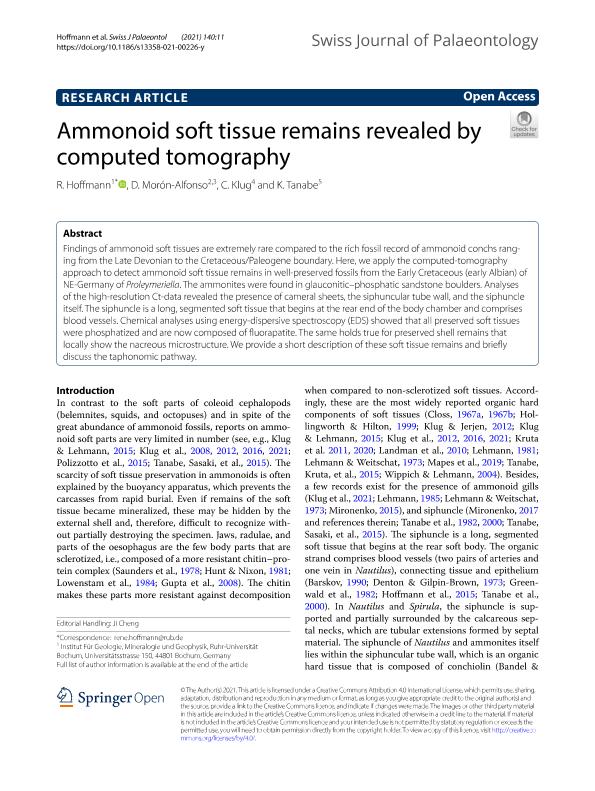Artículo
Ammonoid soft tissue remains revealed by computed tomography
Fecha de publicación:
06/2021
Editorial:
Springer
Revista:
Swiss Journal of Palaeontology
ISSN:
1664-2384
Idioma:
Inglés
Tipo de recurso:
Artículo publicado
Clasificación temática:
Resumen
Findings of ammonoid soft tissues are extremely rare compared to the rich fossil record of ammonoid conchs ranging from the Late Devonian to the Cretaceous/Paleogene boundary. Here, we apply the computed-tomography approach to detect ammonoid soft tissue remains in well-preserved fossils from the Early Cretaceous (early Albian) of NE-Germany of Proleymeriella. The ammonites were found in glauconitic–phosphatic sandstone boulders. Analyses of the high-resolution Ct-data revealed the presence of cameral sheets, the siphuncular tube wall, and the siphuncle itself. The siphuncle is a long, segmented soft tissue that begins at the rear end of the body chamber and comprises blood vessels. Chemical analyses using energy-dispersive spectroscopy (EDS) showed that all preserved soft tissues were phosphatized and are now composed of fluorapatite. The same holds true for preserved shell remains that locally show the nacreous microstructure. We provide a short description of these soft tissue remains and briefly discuss the taphonomic pathway.
Palabras clave:
Ammonoid
,
Soft
,
Tissue
,
Phragmocone
Archivos asociados
Licencia
Identificadores
Colecciones
Articulos(IDEAN)
Articulos de INSTITUTO DE ESTUDIOS ANDINOS "DON PABLO GROEBER"
Articulos de INSTITUTO DE ESTUDIOS ANDINOS "DON PABLO GROEBER"
Citación
Hoffmann, R.; Moron Alfonso, Daniel Andres; Klug, C.; Tanabe, K.; Ammonoid soft tissue remains revealed by computed tomography; Springer; Swiss Journal of Palaeontology; 140; 1; 6-2021; 1-14
Compartir
Altmétricas




